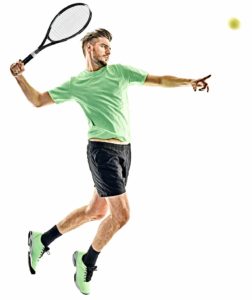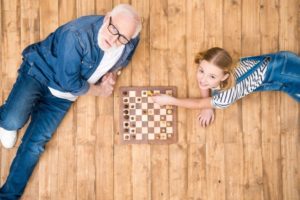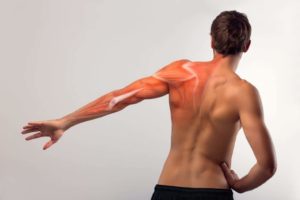Posture
Posture Correction for Static Damage
The word posture tends to evoke the image of a schoolgirl standing perfectly erect with a book on her head. More accurately, static posture refers to the way in which a person holds his or her body or assumes certain positions, such as sitting, standing or sleeping. The cumulative effect of the time spent in certain positions can lead to prolonged static-posture damage to both the musculoskeletal and myofascial systems of the body.
Improve Common Posture Deviations With Yoga
Yoga can be strategically used in concert with exercise physiology tenets to identify common postural issues that cause movement limitations for clients. Learn how taking a biomechanical approach to yoga offers an understanding of the interrelationships among joint structure, muscles and movement and how yoga postures can release tension, restore mobility, enhance stability and rebalance the body.
Unlocking the Pelvis
Eight in ten American adults and adolescents do not move enough! This alarming finding from Department of Health and Human Services 2018 research wholeheartedly underscores Physical Activity Guidelines for Americans (2nd edition) recommendations to move more and sit less. Physical activity helps all of us to feel, function and sleep better, and decreases risk of many chronic diseases. We urgently need more aerobic and muscle-strengthening activities, along with greater variety of movement.
The Power of Simple Lifestyle Changes
Lifestyle choices have a significant impact on quality and length of life. With many Americans living longer than ever, fitness pros are on the front lines of a complex challenge: How will we help people remain active and engaged from their 60s into their 90s and beyond? How can we help them stay healthy to rein in healthcare costs?
Simple Exercises to Improve Posture
Did you know that good posture helps minimize stress on tendons, joints and ligaments? Plus, better posture can have a significant impact on your quality of life. Good posture may improve your job prospects, verbal communication, self-confidence and mood and enhance how others see you.
Ryan Halvorson, chief content officer for Fit Scribe Media and a TriggerPoint® master trainer, explains exercises that can help you improve posture.
Yoga for Optimal Performance
Yoga, as both a philosophy and a physical practice, is one valuable tool to consider integrating into your training programs to help clients
Pilates for Recreational Athletes
Professional athletes of all kinds have discovered that adding Pilates to their training can improve performance, reduce injury, speed recovery, and help their hardworking bodies stay balanced and healthy (Caple 2016; Knowlton 2016; Saxon 2016). Pilates—a whole-body exercise system that can help you develop strength, functional flexibility, coordination and balance—can offer those same benefits to recreational athletes. A well-rounded program, particularly one offered in a fully equipped Pilates studio, can do wonders for athletes of almost any age, ability or sport.
Tennis: Reduce Pain, Improve Performance
Tennis is one of the most popular sports in the world. In the U.S. alone, there are almost 18 million players, with another 14 million expressing interest (TIA 2018). Unfortunately, the dynamic, forceful twists and turns of the game pose ever-present injury risks to players (Roetert & Kovacs 2011).
If your fitness clientele includes people interested in playing this sport, you need to understand the causes of tennis-related injuries. This will help you develop strategies to improve movement function, reduce pain and keep clients on the court.
Research Review: Pros and Cons of Standing
Sitting for extended periods of time is now considered as dangerous as smoking cigarettes, and as a result, many people have taken to standing during the workday. New research is shedding light on both positive and negative effects of the current trend.
Stand Up for Weight Loss
Stand Up to Aging
Getting up off the ground grows more difficult as we age. Muscles and bones weaken, coordination becomes less fluid, and simply doing chores around the house gets more challenging. Ground-to-standing (G2S) exercises address these changes. hile even performance athletes can benefit from G2S drills (see the sidebar “G2S Exercises Also Help Performance Athletes”), they’re supremely helpful for older exercisers who are at risk for broken hips and other threats to their mobility.
Bone Loss: A Primer
Bone loss is a normal part of aging, and understanding it can help fitness professionals to develop preventive strategies for their clients.
Spotting and Fixing Flaws in Walking Biomechanics
Participating in a program of regular exercise is a good idea at any stage of life, but particularly as we get older. Exercising frequently and consistently has many documented benefits, including promoting good health, preventing disease, enhancing mental health and physical capacity, aiding recovery from injury and illness, minimizing the effects of aging, and improving one’s ability to handle the physical demands of life (Bird, Smith & James 1998).
Smoking and Musculoskeletal Injury Risk
Researchers have identified more reasons to quit smoking and to alert any clients who do smoke. A recent research review on smoking and musculoskeletal injury risk in military trainees found that for those who smoked, injury risk was 31% higher for men and 23% higher for women. The risk grew as smoking levels increased. For example, among the heaviest smokers, risk increased up to 84% for men and up to 56% for women.
Shoulder Blades: The Right Moves
The shoulder blades, or scapulae, are critical links in the kinetic chain from the waist through the shoulders, up to the neck and down to the fingertips. Abnormalities in the position or movement of the shoulder blades—technically called scapular dyskinesis—can trigger pain and discomfort, especially among people who spend long hours sitting and using computers.
Programming to Prevent ACL Injury
Your new client, 16-year-old Alexis, is a competitive athlete who wants you to design a fitness program that will help her prevent a second anterior cruciate ligament (ACL) tear. She partially tore her ACL while playing soccer and rehabbed it with a physical therapist, who cleared her to play again. Alexis returned to spring softball without an issue, but she would like to be as fully prepared as possible for the upcoming fall soccer season. She hopes to be recruited to play in college, but her parents are concerned she will sustain another ACL injury, perhaps a more severe one.
Getting to the Bottom: The Ischial Tuberosity
The posterior aspect of the body, along with its muscles, tendons, bones and attachments, is easy to overlook because it’s out of sight and, therefore, often out of mind. Until, that is, pain occurs. The ischial tuberosity—also known as the “sit bones” or even “sitz bones” (from the German word sitzen) (Garikiparithi 2017)—has many different connections, although it is mainly associated with the hamstring muscles (Drake et al. 2010).
A Scientific Approach to Core Training
Core training can improve functional capacity and reduce injury potential. But accurately programming a successful, tailored and progressive core- training protocol can be a complicated endeavor. Now, researchers from Heriot-Watt University in Edinburgh, Scotland, have developed a model they hope gives fitness pros a solid platform to work from.
The Anatomy of Functional Training Risks
Many clients can’t seem to get enough of workouts that meld functional movements with high-intensity resistance training. Indeed, workouts using dynamic, high-intensity, full-body movements are great for strength and health—provided the body functions properly and exercisers use correct technique.
Cultivate Joy Through Mindfulness
It’s a busy, technology-dominated world—and most of us are continually spinning, twisting and turning in an effort to “get things done” and “produce.” We work, we raise families, we have countless responsibilities. The truth is, this is distracted living, and it raises stress levels, lowers productivity and interferes with our ability to focus. When we live this way, we fail to cultivate a sense of contentment and joy.
Any Kind of Physical Activity Reduces Mortality Rates
Plenty of research encourages hitting the gym or going for a run as a means of keeping the grim reaper at bay. It turns out that any kind of physical activity—whether it’s achieved at the gym or at work—has protective benefits, according to a study produced by the Population Health Research Institute at McMaster University in Hamilton, Ontario.



















